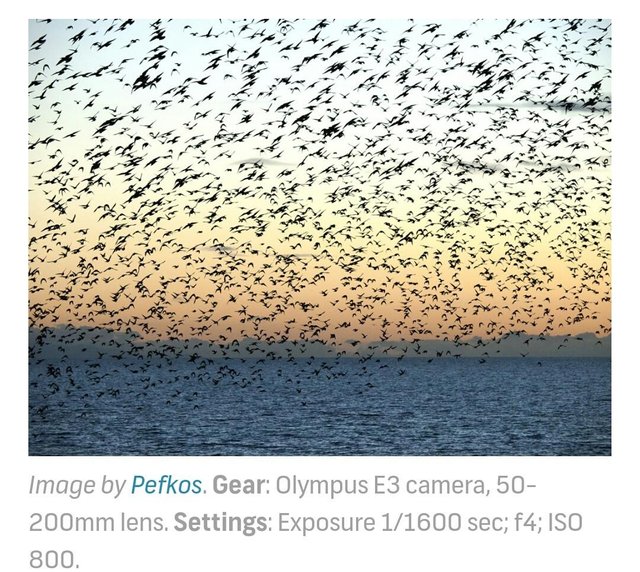In late November, UK photographer Victor Burnside makes his way to North Pier, Blackpool, where thousands of starling birds dance across the sky. A murmuration is a kind of swarming behavior; the birds fly en masse in patterns and formations often compared to acrobatics or ballet. Burnside is there to capture the scene at sunset, just before the starlings settle down for the night.
The starling murmurations are still something of a mystery to humans, but we know they exist for a few reasons. The large swarms offer protection from predators, and they also allow the birds to communicate with one another about possible food sources. At this time of year, the movement also helps them to stay warm.
A change in one bird’s velocity affects the seven birds closest to him, causing a ripple effect.
“It happens quite suddenly,” Burnside explains, “I find it a magical sight.”
In recent years, the mechanics of the phenomenon have been studied by statistical and theorical physist. They determined that a change in one bird’s velocity affects the seven birds closest to him, causing a ripple effect that eventually reaches all of the other birds. This way, thousands of individuals appear to move as one.
The birds, amazingly, are able to mimic dozens of other species and can even echo the noises of ringing telephones. Burnside is familiar with the starlings’ signature sound. “As they pass overhead, they make a loud swooshing sound and chatter loudly when they settle to roost,” he tells us.
It’s difficult to photograph the birds because they move so quickly. They’re also only around for a few weeks each year, making Burnside’s time with them precious. He’s braved rough, bitterly cold nights on the pier in order to see the murmurations, and he’s survived hypothermia in the past. “On one occasion, I ended up in hospital after a nosebleed brought on by the cold,” he admits.
Sadly, Burnside says there are fewer starlings in the area than there once were, and there’s data to suggest the birds are indeed in trouble. The royal society for the protection of birds ( RSPD )recently revealed that starling populations had droppep by about 80% between 1979 and 2012. The murmurations themselves have also become significantly smaller in number. The starlings are losing their habitats and homes in the countryside; increased human activities, like large-scale farming, have diminished the birds’ insect food source.
Still, as long as the starlings are here and flying, Burnside will brave the weather to see them do their nightly routine. It’s always worth it. We asked the photographer to share some of his best photographs from North Pier and give us a few tips about making pictures of these breathtaking murmurations.


Tip 1
Be prepared to get cold. Dress in warm clothes. Gloves are essential.




Tip 2
Use a tripod



Tip 3
Enjoy the marvelous spectacle!

Hi! I am a robot. I just upvoted you! I found similar content that readers might be interested in:
https://www.shutterstock.com/blog/the-magic-of-starling-murmurations-in-photos
Downvoting a post can decrease pending rewards and make it less visible. Common reasons:
Submit